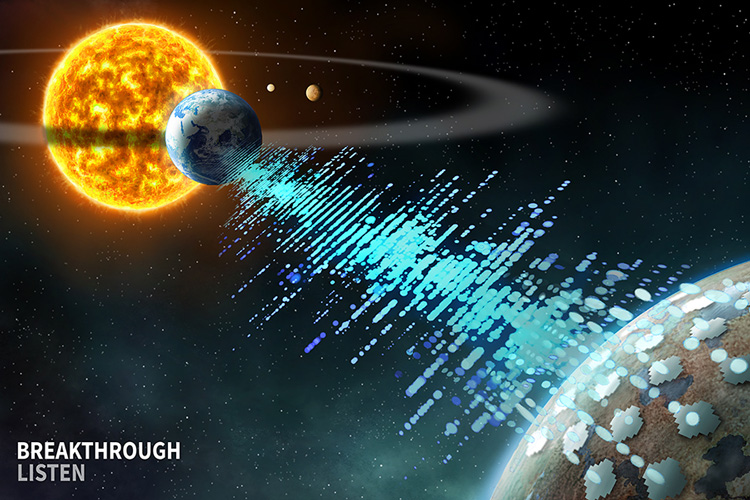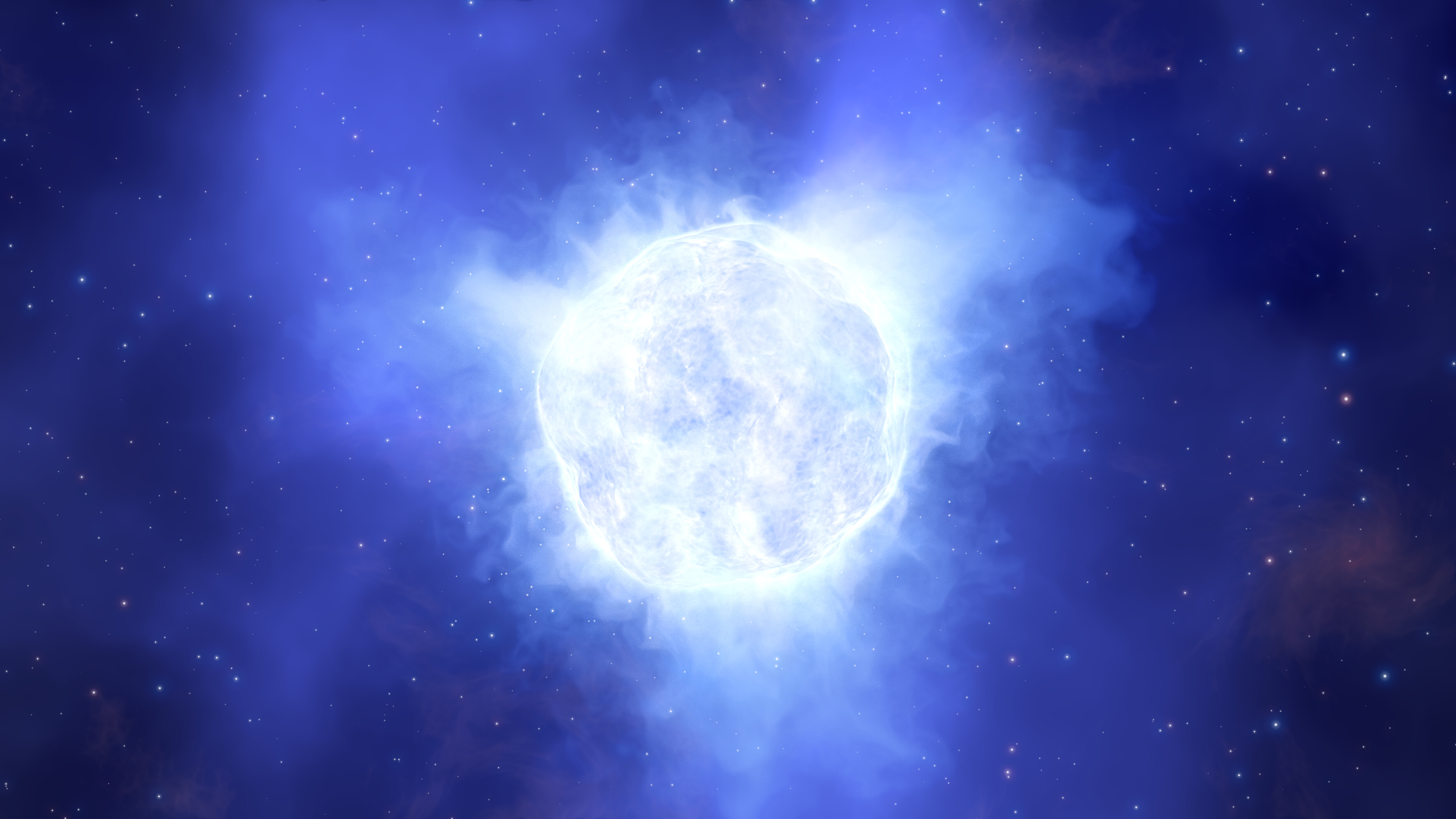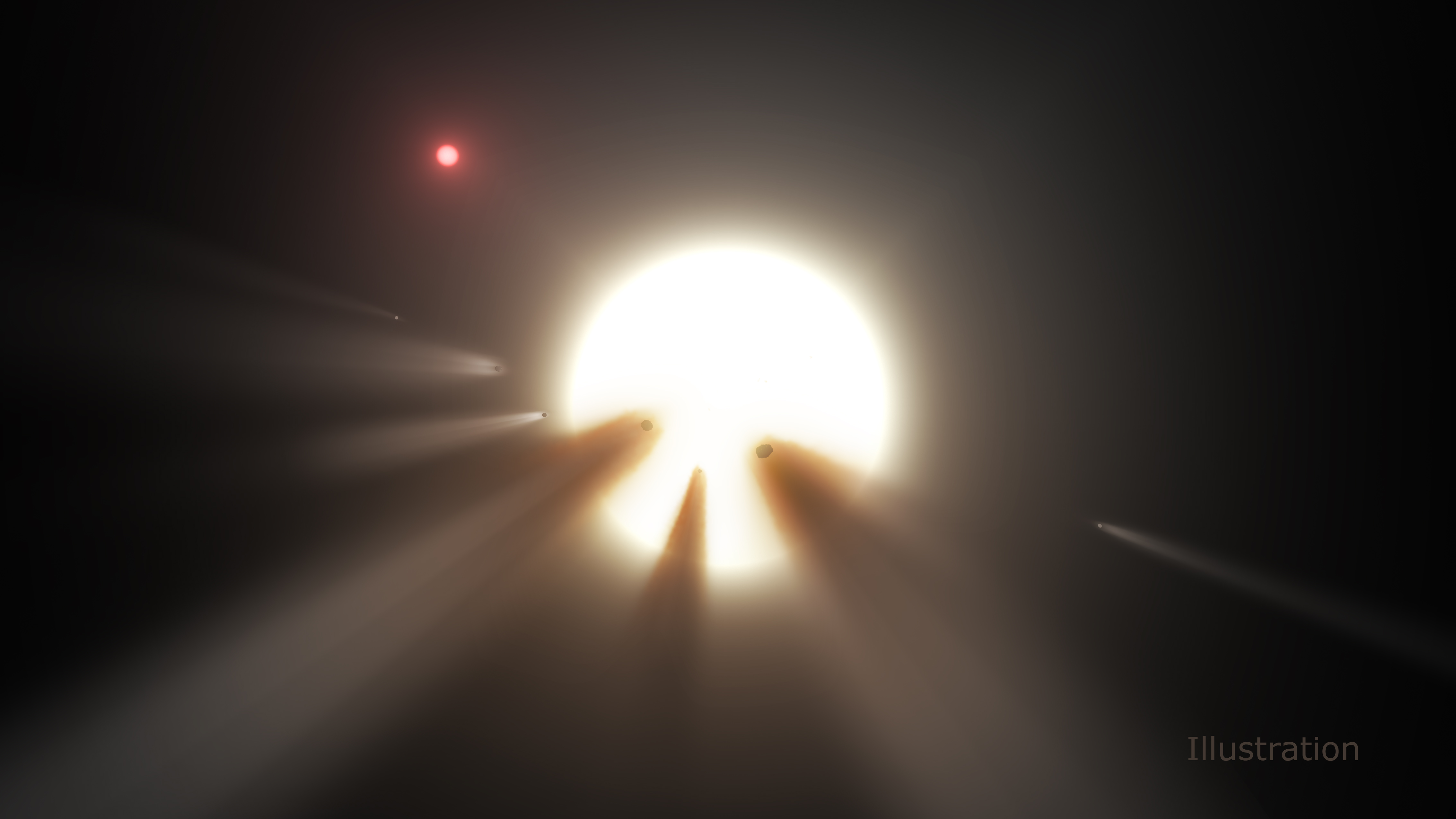Products You May Like
In July of 2015, Breakthrough Initiatives announced that it was embarking on a ten-year initiative to conduct the largest Search for Extraterrestrial Intelligence (SETI) to date.
This initiative was aptly named Breakthrough Listen, which combines state-of-the-art software and data obtained by premier observatories around the world to look for signs of extraterrestrial technological activity (aka. technosignatures).
In recent years, Breakthrough Listen has made two major releases of data, and announced a lucrative collaboration with NASA’s Transitting Exoplanet Survey Satellite (TESS) mission.
And most recently, Breakthrough Listen announced the release of their catalog of “Exotica” – a diverse list of objects that could be of interest to astronomers that are searching for signs of technosignatures and extraterrestrial intelligence (ETI).
The catalog was described in a paper, titled “One of Everything: The Breakthrough Listen Exotica Catalog,” which was recently submitted for publication to The Astrophysical Journal Supplement Series.
The team responsible for the catalog was led by Dr. Brian C. Lacki, an astronomer with the Berkeley SETI Research Center (BSRC) and included members from UC Berkeley, the SETI Institute, and multiple universities.
 Artist’s impression of Breakthrough Listen spotting technosignatures from a distant planet. (Breakthrough Listen)
Artist’s impression of Breakthrough Listen spotting technosignatures from a distant planet. (Breakthrough Listen)
The release of this catalog is especially significant since it includes objects and environments where life is not known to thrive.
That is to say, “life as we know it,” which is what Breakthrough Listen and all SETI surveys to date have focused on. Far from being a deliberate effort to include other forms of life, this focus has been entirely out of necessity.
Part of the problem historically has been our instruments. Put simply, the Universe is extremely huge, possibly even infinite. Our best estimates say that the observable part measures an estimated 96 billion light-years in diameter.
At the same time, what can see is subject to Einstein’s theory of special relativity, where the speed of light is not only constant, but a cosmic absolute.
Because of this, astronomers have to monitor space very carefully to tease out what could be signs of life or activity amid the background noise.
Second, there’s the issue of our frame of reference. Despite over a century of advanced astronomical surveys, Earth is still the only planet we know of where life exists, and humanity the only example of a technologically-advanced species.
But what if ETIs are not like humanity at all, and live in exotic environments that are extreme by our standards? This could include extreme temperature environments, like the atmospheres of Hot Jupiters or the frigid outer reaches of a star system.
It could also include the extreme gravity of neutron stars, of the outer Solar System, the extreme gravity of neutron stars, or the high-radiation of galactic cores and stellar clusters.
 (ESO/L. Calcada)
(ESO/L. Calcada)
Above: This illustration shows what the luminous blue variable star in the Kinman Dwarf galaxy could have looked like before its mysterious disappearance.
That’s the beauty of Breakthrough Listen’s Exotica Catalog, a collection of over 700 distinct targets that includes “one of everything” in the observed Universe.
This ranges from comets to galaxies and from mundane objects to the rarest and most violent of celestial phenomena. Ultimately, the goal behind this catalog is to introduce the concept of survey breadth – aka. the diversity of objects observed during a program.
In so doing, the BL team hopes to increase the likelihood of finding evidence of ETIs, allowing for beneficial astrophysics research, and inspiring thought about our current characterization systems. As Dr. Lacki explained:
“Many discoveries in astronomy were not planned. Sometimes a major new discovery was missed when nobody was looking in the right place, because they believed nothing could be found there. This happened with exoplanets, which might have been detected before the 1990s if astronomers looked for solar systems very different than ours. Are we looking in the wrong places for technosignatures? The Exotica catalog will help us answer that question.”
For convenience’s sake, the catalog is divided into four categories of objects: Prototypes, Superlatives, Anomalies, and a control sample.
The Prototype list contains at least one of every known kind of celestial object considered to be a realistic and valuable observation target. This includes planets and moons, stars of all ages (new, old, main sequence, red giant, etc.), star clusters, galaxies, quasars.
 Artist’s impression of an orbiting swarm of dusty comet fragments around Tabby’s Star. (NASA/JPL-Caltech)
Artist’s impression of an orbiting swarm of dusty comet fragments around Tabby’s Star. (NASA/JPL-Caltech)
The Superlatives category includes objects that have the most extreme and/or record-breaking properties. Some examples include the hottest planet, stars with the highest metallicity, the most distant quasar, the fastest-spinning pulsar, the densest galaxy, etc.
The Anomalies category applies to targets whose behavior has managed to defy explanation so far.
Examples include “Tabby’s Star” and its mysterious dimming patters; the interstellar object ‘Oumuamua that made a flyby of Earth in 2017; fast radio burst (FRBs), especially the repeating kind; and stars with excess infrared radiation, which could be interpreted as waste heat from a megastructure.
The control sample category rounds things out with a series of objects that are not expected to provide any positive results.
Ultimately, Breakthrough Listen hopes that with the help of the Exotica Catalog, astronomers will be able to answer some hard questions concerning SETI research. For starters, they hope to shed some more light on Fermi’s famous question – “Where is everybody?” Or perhaps more accurately, why haven’t we heard from or found evidence of anybody out there?
As Dr. Andrew Siemion, leader of the Breakthrough Listen science team at the UC Berkeley’s SETI Research Center, explained:
“Technosignature searches to date have largely focused on the search for ‘life as we know it’: nearby stars – in particular those known to host planets with the potential for liquid water on their surfaces. The expanded search capabilities that Breakthrough Listen has made possible allow us to consider a much wider range of possible technology-laden environments.”
Naturally, several theories have been put forward over the years for why humanity has not found any hard evidence for ETIs.
A classic example is the Hart-Tipler Conjecture, named after astrophysicist Michael H. Hart and mathematical physicist/cosmologist Frank Tipler, which gained popularity during the 1980s. This theory claims that the simplest answer to Fermi Paradox is probably the right one – we are alone in the Universe.
Other theories venture that the problem lies with our instruments and pre-conceived notions of where and how life would emerge. Given the vastness of the cosmos and the distances between possible civilizations, this school of thought argues that SETI researchers will have to be patient and await further advancements.
Another possibility is that we simply haven’t been looking in the right places and must expand their list of potential targets.
Herein lies another reason for the Exotica Catalog, which is the centerpiece of Breakthrough Listen’s effort to expand the diversity of its targets. This concept is known as “survey breadth,” where a diverse sampling of objects can lead to more positive results. In the process, Breakthrough Listen hopes to help astronomers place better constraints on where ETIs are and how we could find them.
On the one hand, astronomers may find that there is a wider range of “habitable zones” within star systems and in galaxies, or perhaps what was thought to be naturally-occurring phenomena is actually artificial in origin.
On the other hand, they might find that there are natural events or types of interference that are capable of mimicking the kinds of artificial signals SETI researchers usually look for.
As S. Pete Worden, the former Director of NASA’s Ames Research Center and the current Executive Director of the Breakthrough Initiatives, summarized:
“When it comes to the search for intelligent life, it’s vital to have an open mind. Until we understand more about the forms another civilization and its technology could take, we should investigate all plausible targets. Cataloging them is the first step toward that goal.”
Thanks to the number of exoplanets discovered in recent decades and the way observatories and space telescopes are becoming more and more sophisticated, some believe its only a matter of time before we find the needle in the “cosmic haystack”.
In the meantime, it doesn’t hurt to take a look at our methods and what we consider to be technosignatures. In SETI research, an open mind is just as important as powerful instruments!
Other team members that are responsible for the Exotica Catalog include researchers and astronomers from UC Berkeley’s Radio Astronomy Laboratory, the University of Southern Queensland, Swinburne University of Technology, the SETI Institute, the University of Manchester, and the University of Malta’s Institute of Space Sciences and Astronomy.
This article was originally published by Universe Today. Read the original article.
